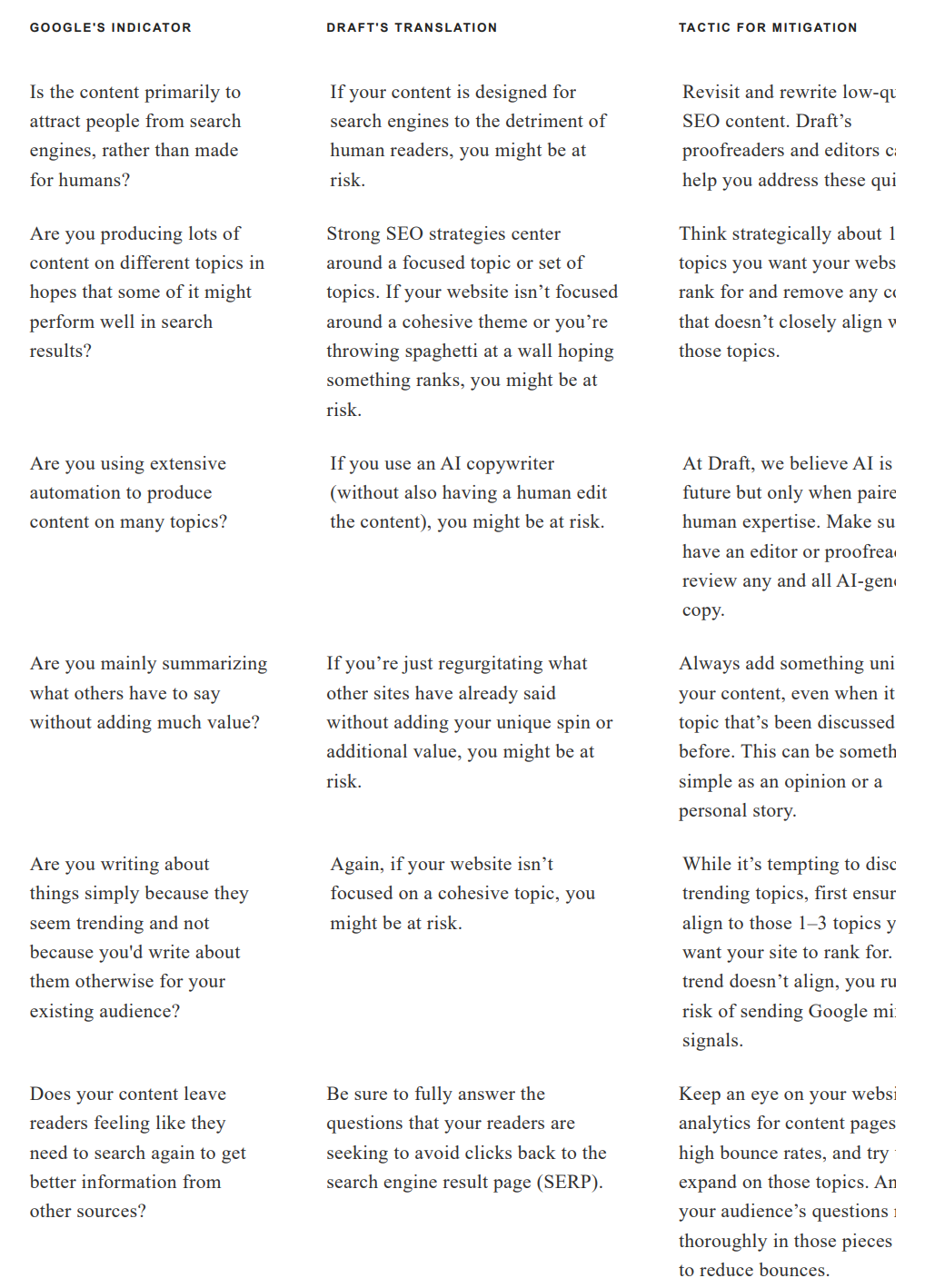Dissecting Google’s “helpful content” update
February 4, 2022
|
John Thomas
Explore the latest update from Google that emphasizes the importance of helpful content and its impact on search engine optimization.

Google announced its “helpful content update” Thursday as a part of ongoing efforts to serve “original, helpful content written by people, for people,” in their search results. The update will begin rolling out next week and will take about two weeks to complete. Sites impacted by the change may see fluctuations for several months following the update.
Google’s initial guidelines around this update have been met with some confusion. On one hand, they’re saying that content “made for search engines” will be negatively impacted. On the other hand, they acknowledge that SEO best practices, such as those listed in their own guidelines, aren’t the behaviors they’re targeting with this update.
Translating Google’s “Helpful Content Update”
While it remains to be seen exactly how many websites will be affected and to what degree, Google lists several questions to ask yourself to identify if your website or content will be negatively impacted by this update. We’ve translated each into behaviors that we believe Google is trying to deter, and ways you can mitigate the risk to your site and blog.
Google's Indicator draft's translation tactic for mitigation

The bottom line
Many of these tactics will seem obvious to seasoned content marketers and SEOs. At its core, this update is about E-A-T or, in other words, serving searchers content that has expertise, authority, and trustworthiness.
Draft customers have little to worry about with this update. Because our content is written by vetted, human writers, each piece is unique and aims to add real value to your site, blog, social media, and wherever else you publish content.
For help proofing or editing old content ahead of this Google update, submit a brief.
*Please note that the opinions expressed in this piece are those of the author. Draft cannot guarantee the effects of third-party updates on content ranking or efficacy.



